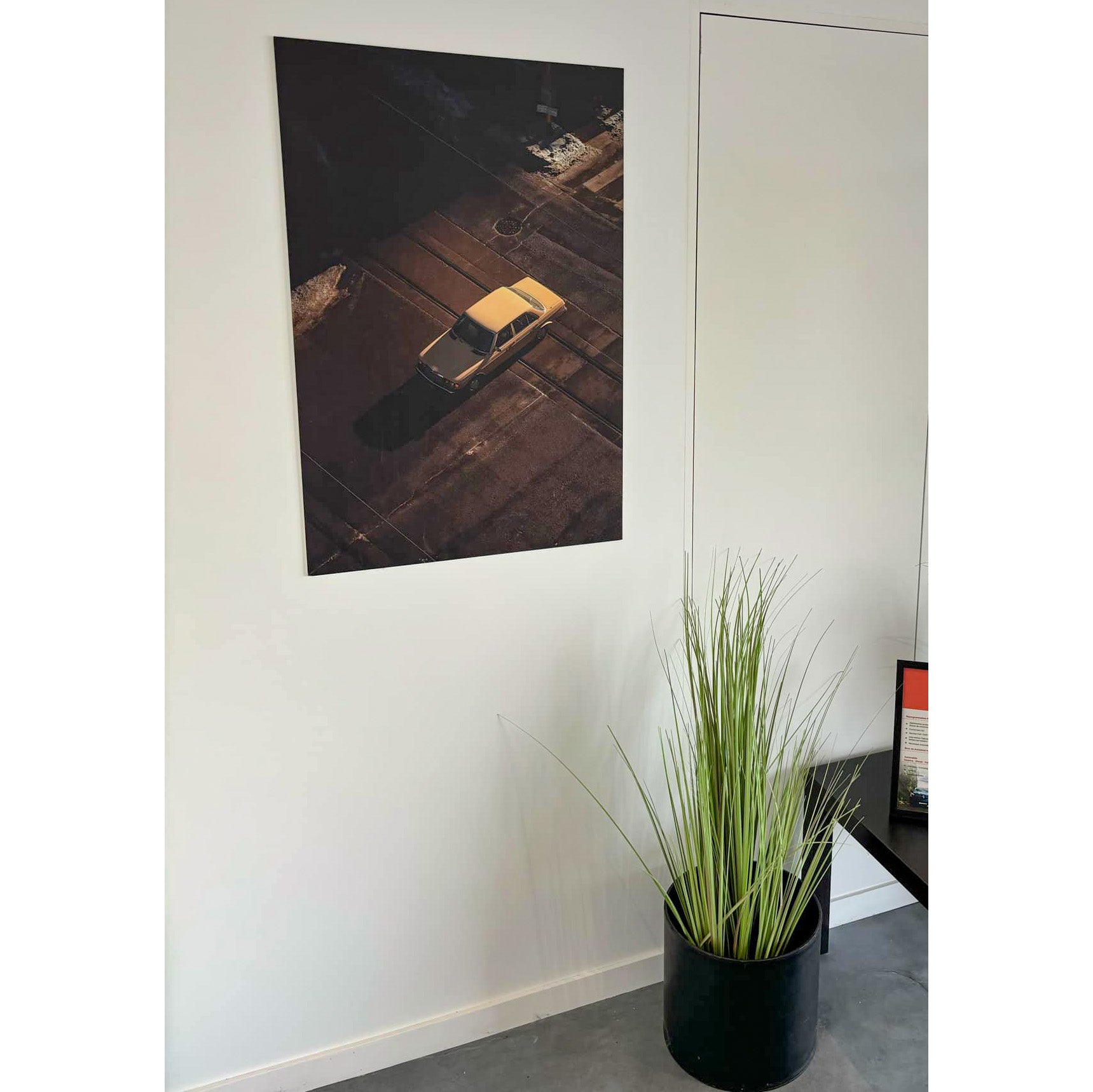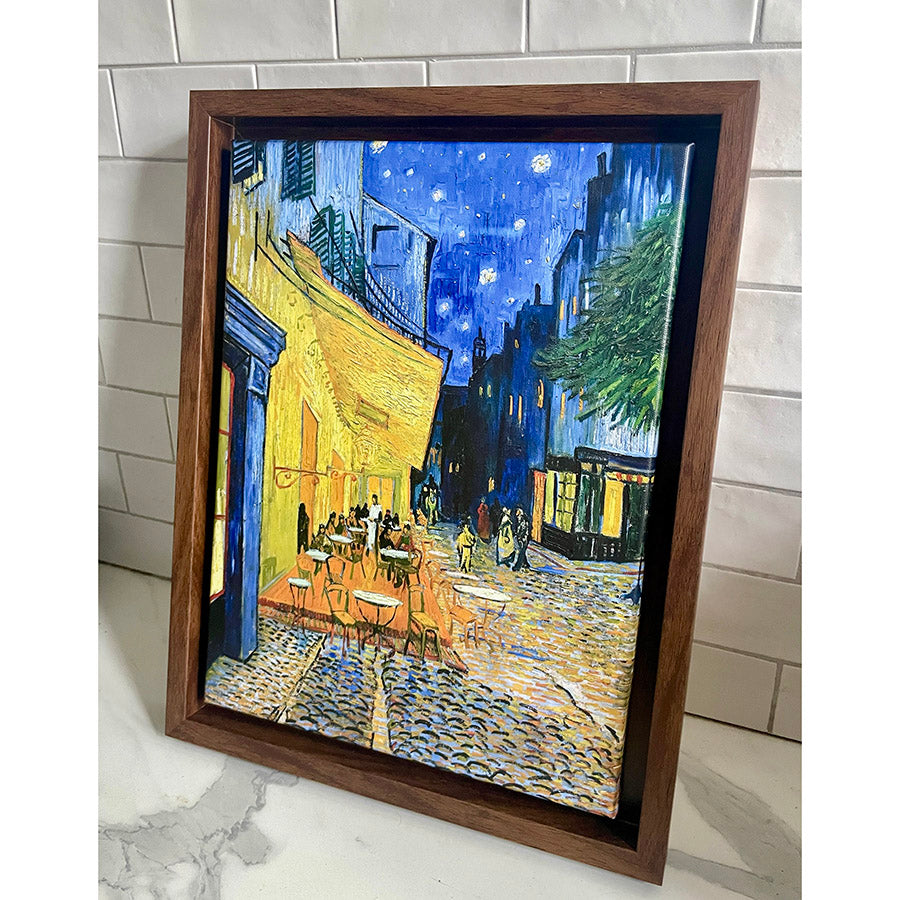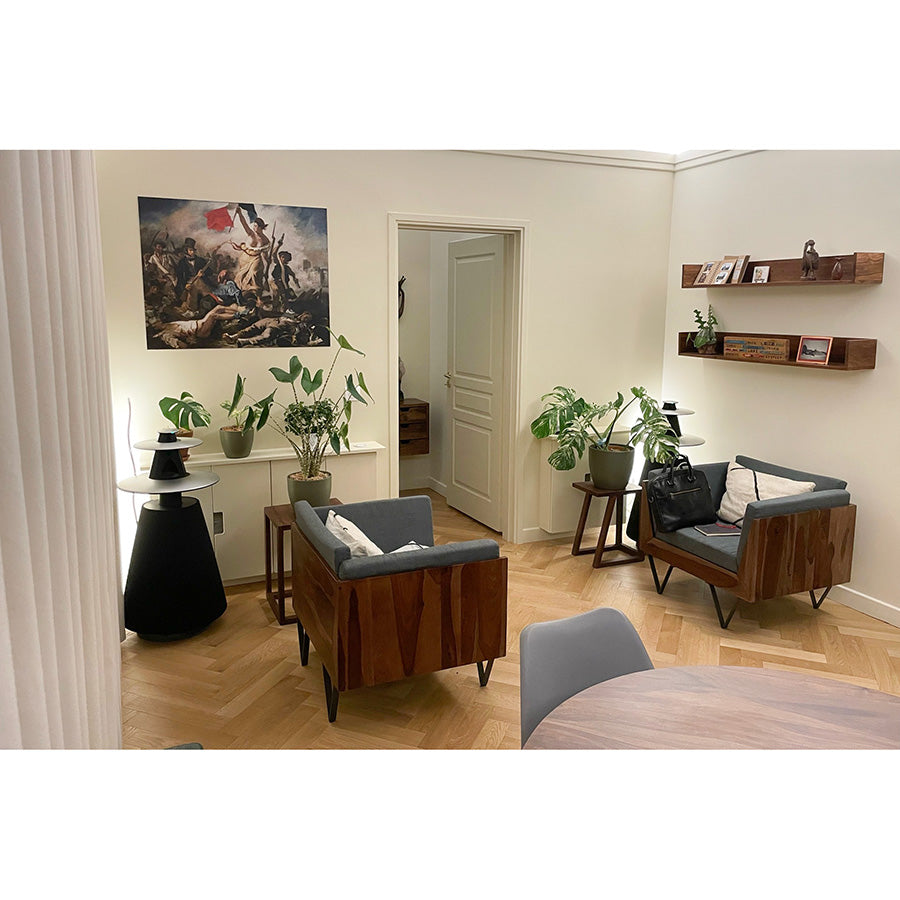Art print | Fox Hunt on the Way to the Burrow - Samuel Howitt


View from behind

Frame (optional)
Chase for the Fox on the Way to the Burrow: a dynamic sense of movement and tradition
"Chase for the Fox on the Way to the Burrow" is a work that captures the energy and excitement of a traditional hunt. The vivid colors, notably reds and greens, evoke the vibrant nature and the dynamism of the riders in action. The composition is carefully orchestrated, with figures in motion that seem almost to emerge from the canvas. The painting technique, rich in detail, allows you to feel the passion and adrenaline of this ancient activity. The overall atmosphere of the work is both festive and wild, inviting the viewer to share in this thrilling experience.
Foxhunting Going to Cover: a tribute to English nobility
The artist of "Chase for the Fox on the Way to the Burrow," Foxhunting Going to Cover, belongs to an artistic tradition that celebrates English nobility and its leisure activities. In the 19th century, foxhunting was not only a sport but also a symbol of social status. The artist, influenced by the great masters of the time, manages to capture the essence of this activity while incorporating elements of realism that make the scene lively. This artwork reflects a time when nature and aristocratic traditions were at the heart of daily life, mirroring the values and passions of a society in full transformation.
A decorative acquisition with multiple assets
The art print of "Chase for the Fox on the Way to the Burrow" is a decorative choice that will appeal to art and nature lovers. Ideal for a living room, an office, or even a game room, this canvas adds a touch of authenticity and adventure to your interior. Its reproduction quality ensures fidelity to the details, allowing you to fully appreciate the lively scene. The aesthetic appeal of this work, with its movement and vibrant colors, enriches your decor while sparking interest and conversation among your guests. By incorporating this painting, you add a centerpiece that evokes both tradition and dynamism.

Matte finish

View from behind

Frame (optional)
Chase for the Fox on the Way to the Burrow: a dynamic sense of movement and tradition
"Chase for the Fox on the Way to the Burrow" is a work that captures the energy and excitement of a traditional hunt. The vivid colors, notably reds and greens, evoke the vibrant nature and the dynamism of the riders in action. The composition is carefully orchestrated, with figures in motion that seem almost to emerge from the canvas. The painting technique, rich in detail, allows you to feel the passion and adrenaline of this ancient activity. The overall atmosphere of the work is both festive and wild, inviting the viewer to share in this thrilling experience.
Foxhunting Going to Cover: a tribute to English nobility
The artist of "Chase for the Fox on the Way to the Burrow," Foxhunting Going to Cover, belongs to an artistic tradition that celebrates English nobility and its leisure activities. In the 19th century, foxhunting was not only a sport but also a symbol of social status. The artist, influenced by the great masters of the time, manages to capture the essence of this activity while incorporating elements of realism that make the scene lively. This artwork reflects a time when nature and aristocratic traditions were at the heart of daily life, mirroring the values and passions of a society in full transformation.
A decorative acquisition with multiple assets
The art print of "Chase for the Fox on the Way to the Burrow" is a decorative choice that will appeal to art and nature lovers. Ideal for a living room, an office, or even a game room, this canvas adds a touch of authenticity and adventure to your interior. Its reproduction quality ensures fidelity to the details, allowing you to fully appreciate the lively scene. The aesthetic appeal of this work, with its movement and vibrant colors, enriches your decor while sparking interest and conversation among your guests. By incorporating this painting, you add a centerpiece that evokes both tradition and dynamism.









